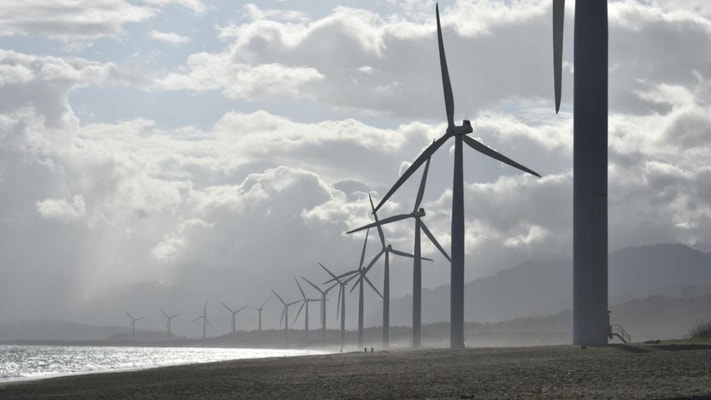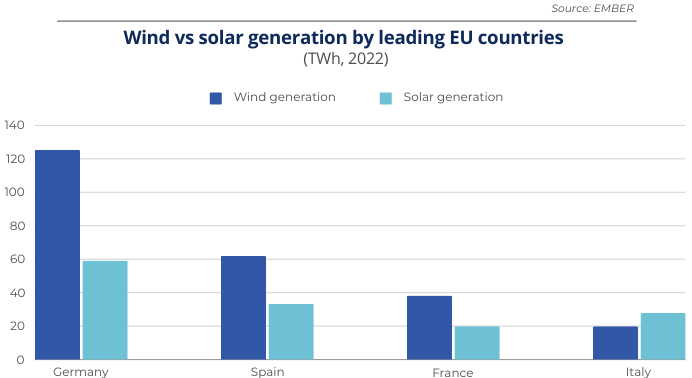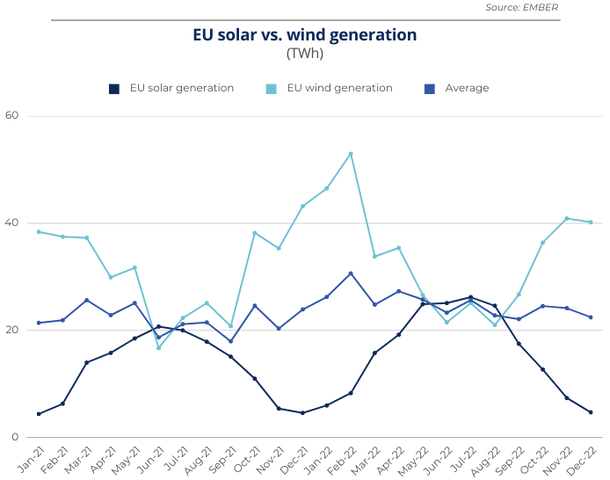The Energy Future Marked by Wind

17 JAN, 2024
By RankiaPro Europe

By MainStreet Partners
Investments in renewable energy projects represent a crucial choice for the European Union (EU) in achieving ambitious environmental goals. This path not only effectively combats climate change but also offers benefits to both emitters and investors, aligning with the EU's Environmental Taxonomy. Significant investments in energy transfer infrastructure are essential for the success of the set course. In the current context of attention to energy transition, the focus shifts towards investments in wind and solar projects, highlighted by the historic record of 2022 when they surpassed the total gas generation share in Europe.
Between 2015 and 2022, annual investments in solar technologies grew by 73%, while wind energy investments increased by 68%.
In 2022, solar energy production in the European Union grew by 24%, bringing its overall share in the energy mix to 7.3%. This significant increase was mainly driven by substantial production increases in Germany, Spain, the Netherlands, and France. At the same time, wind energy generation grew by 8.6% in the same period, contributing to 15% of the EU's overall energy.

It currently stands as the second most relevant source of clean energy generation in the
EU, with prospects to surpass nuclear energy in the near future.
In the overall energy and environmental landscape, it is clear that wind energy emerges as the true queen when it comes to electricity generation. But what makes this energy source so attractive in Green, Social, and Sustainability Bond (GSS) emissions?
In the world of renewable energy, wind turbines emerge as true efficiency champions, with a
performance ranging from 20% to 40% more in usable electricity generation. On the other hand, solar panels range around 15-20%, but it is only with more advanced versions that they manage to reach peaks of efficiency, reaching up to 23%.
A significant element in this dynamic is the limited capacity of solar energy to generate power due to the irregularity of sunlight. However, this limitation is nullified when it comes to small-scale energy production for consumers. The ease of optimal placement of solar panels is an initial advantage. Wind turbines, on the other hand, require a constant strong wind flow, not always achievable in densely populated areas. In practice, this means that renewable energy plant projects financed through GSS Bond emissions are more likely to be based on wind energy, as these projects require significant initial investments.
Interestingly, wind and solar energy production in Europe tends to oscillate in opposite
directions: solar performance increases during the summer, while wind improves during
winter and spring.
Ultimately, with the widespread implementation of more and more renewable energy projects, financed, for example, through GSS Bond emissions, it will be possible to create a more efficient combination of energy generation. This situation will facilitate a global economic transition towards the 'net-zero' CO2 emissions goal.

Related articles
 Granolas Stocks: what they are and differences with the Magnificent 7
Granolas Stocks: what they are and differences with the Magnificent 7By RankiaPro Europe

